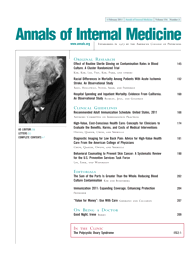 Eating cheese and other full fat dairy foods appears to confer an advantage in risk for the incidence of type 2 diabetes. Risk of developing this common disease declined significantly as levels of a fatty acid found in whole-fat dairy products increased, data from a recent large cohort study showed.[1]
Eating cheese and other full fat dairy foods appears to confer an advantage in risk for the incidence of type 2 diabetes. Risk of developing this common disease declined significantly as levels of a fatty acid found in whole-fat dairy products increased, data from a recent large cohort study showed.[1]
Those adults that were found to have the highest levels of trans-palmitoleic acid had a remarkable 60% lower diabetes incidence compared with individuals who had the lowest levels. Risks for metabolic syndrome were also reduced in those with the higher TPA levels – as one might expect.
Whilst statistical analysis of demographic, clinical, and lifestyle factors showed that whole-fat dairy consumption had the strongest association with levels of trans-palmitoleate there is still some uncertainty about the correlation.
The authors stated:
“The small differences in trans-palmitoleate levels raise questions about whether this is the active compound or a marker for some other, unknown protective constituent of dairy or other ruminant foods.”
Indications are that trans-palmitoleate could exert effects on pathways related to insulin resistance, dyslipidemia, and hepatic fat synthesis.
A product of endogenous fat synthesis, circulating palmitoleic acid has been associated with protection against insulin resistance and metabolic dysregulation in experimental models bu to date studies in humans, have yielded mixed results.
“In fact, several studies have demonstrated inverse associations between dairy consumption and risk for insulin resistance, the metabolic syndrome, or diabetes.”
The patient cohort of the Cardiovascular Health Study provided an opportunity to examine associations between trans-palmitoleate, metabolic risk factors, and risk of type 2 diabetes. Mozaffarian and coauthors analyzed data on 3,736 study participants, all of whom were 65 or older and were identified from Medicare eligibility lists.
Baseline assessments included physical examination, diagnostic testing, questionnaires about health status, and laboratory evaluation that included measurement of 45 different fatty acids. Study participants were followed for 10 years, including annual clinic visits and interim telephone calls.
Laboratory results showed that trans-palmitoleate accounted for an average of 0.18% of total fatty acid. Levels had a strong correlation with known biomarkers of dairy-fat consumption but a weak correlation with biomarkers of partially hydrogenated oils.
Whole-fat dairy consumption had the strongest association with trans-palmitoleate levels. Separate analyses of different types of dairy foods further refined the association by showing that levels of the fatty acid were most closely associated with whole-milk consumption. Levels of trans-palmitoleate were not significantly related to consumption of carbohydrates, protein, red meat, or low-fat dairy foods.
In multivariate analyses, higher trans-palmitoleate levels were significantly associated with:
- Lower body mass index (-1.8%, P=0.058)
- Smaller waist circumference (-1.8%, P=0.009)
- Higher levels of HDL cholesterol (1.9%, P=0.043)
- Lower triglyceride levels (-19.0%, P<0.001)
- Lower total cholesterol:HDL ratio (-4.7%, P<0.001)
- Lower levels of C-reactive protein (-13.8%, P=0.050)
- Lower fasting insulin levels (-13.3%, P=0.001)
- Less insulin resistance by homeostasis model (-16.7%, P<0.001)
“Each higher standard deviation of trans-palmitoleate was associated with a 28% lower risk of diabetes,”
Acknowledging limitations of the study, Mozaffarian and colleagues noted that trans-palmitoleate levels were measured at a single point in time and that food intake was based on self-reports.
Comment
An interesting but not conclusive study that may be highlighting effects derived from dairy that was not measured – ie another factor.
Dairy has many complications but people do eat a lot of it and it can be helpful to consider a positive element as much as we do a negative one.
References
[1] Mozaffarian D et al “Trans-Palmitoleic acid, metabolic risk factors, and new-onset diabetes in U.S. adults” Ann Intern Med 2010; 153: 790-799. View Abstract





